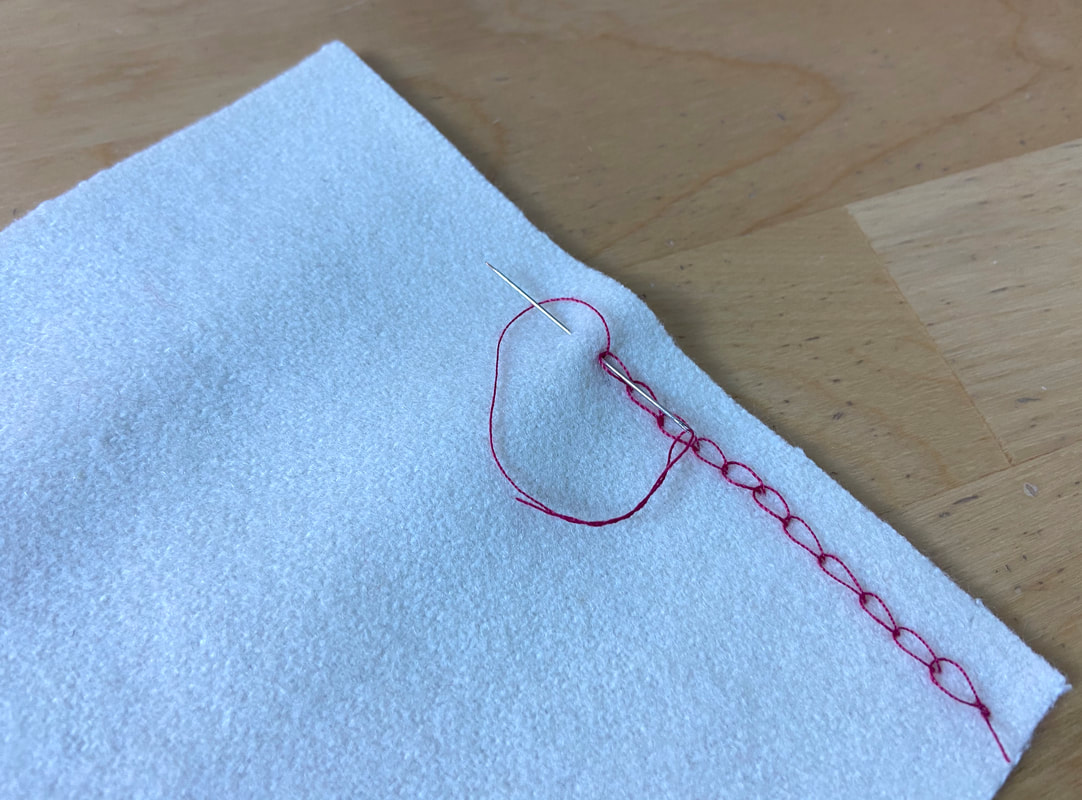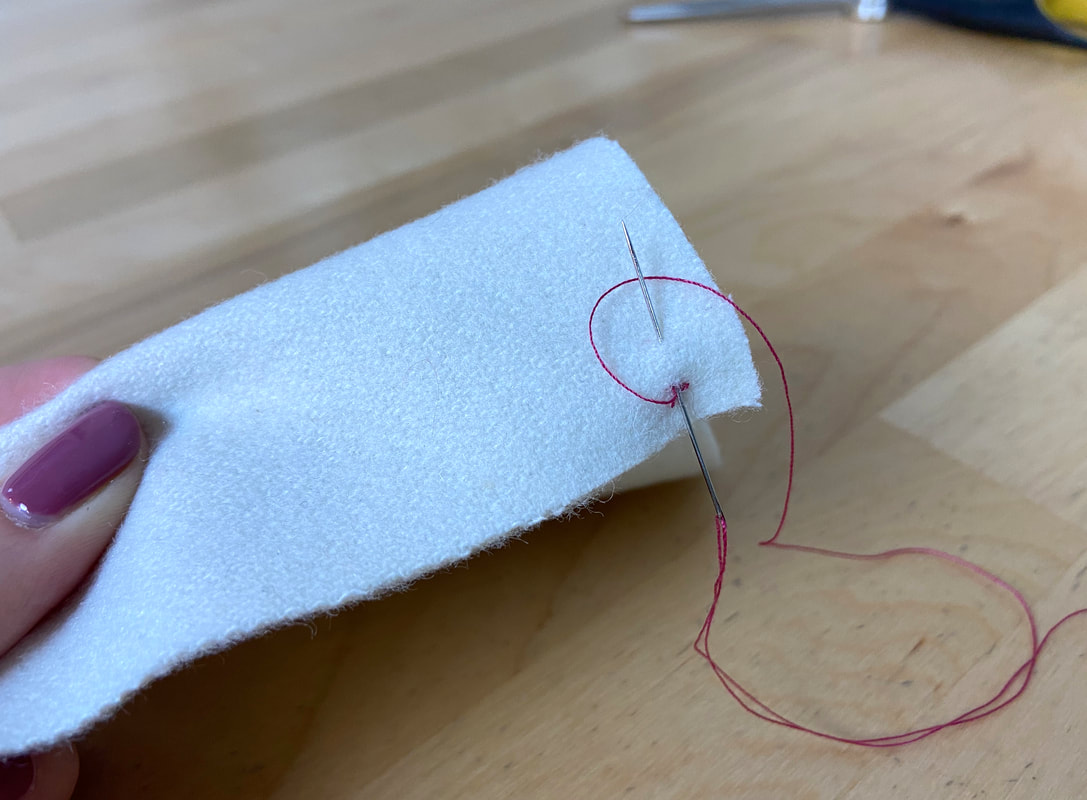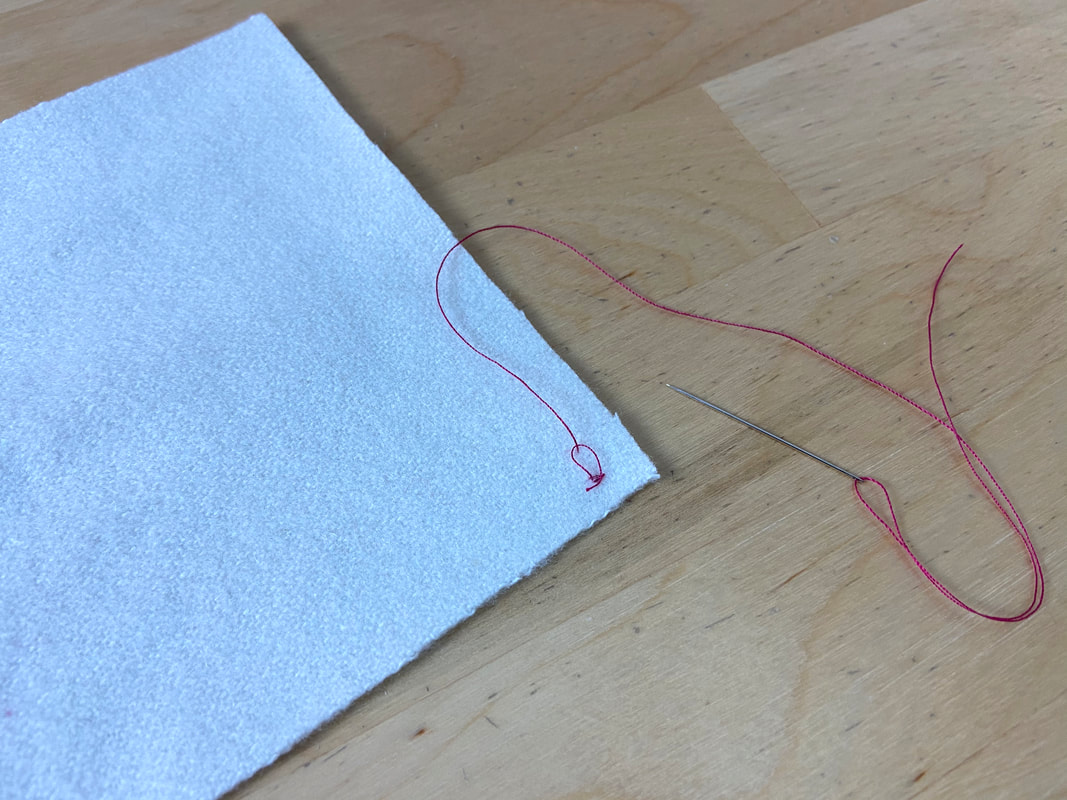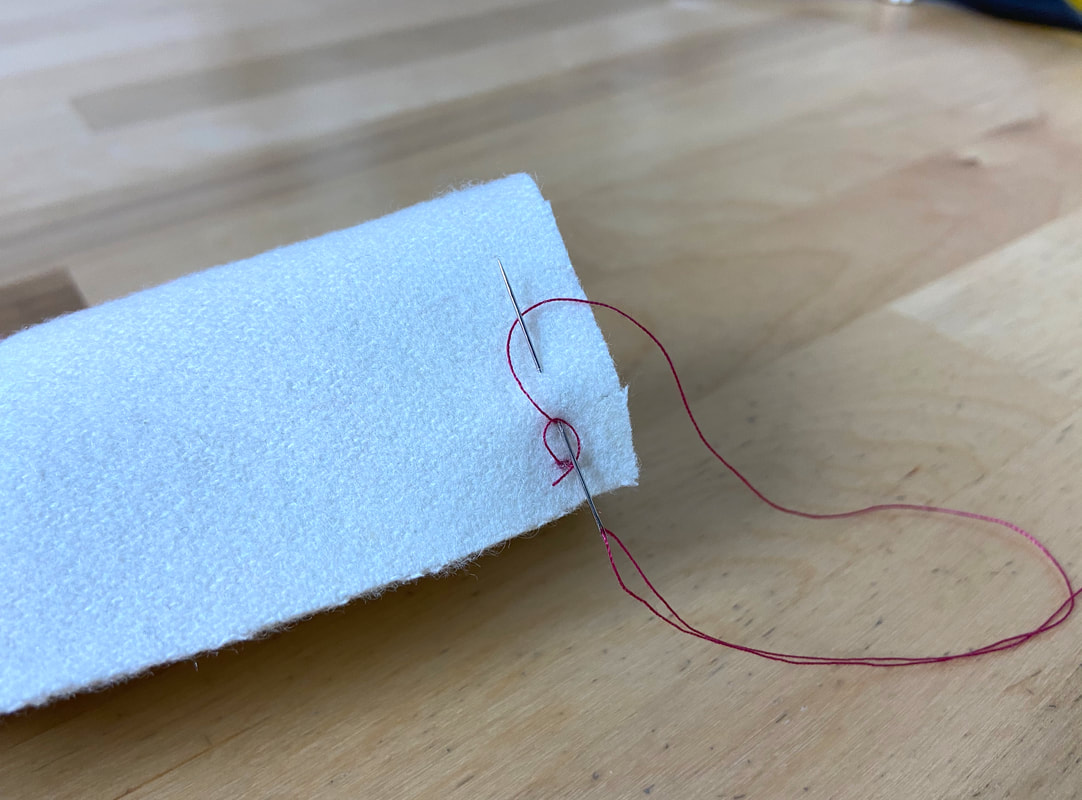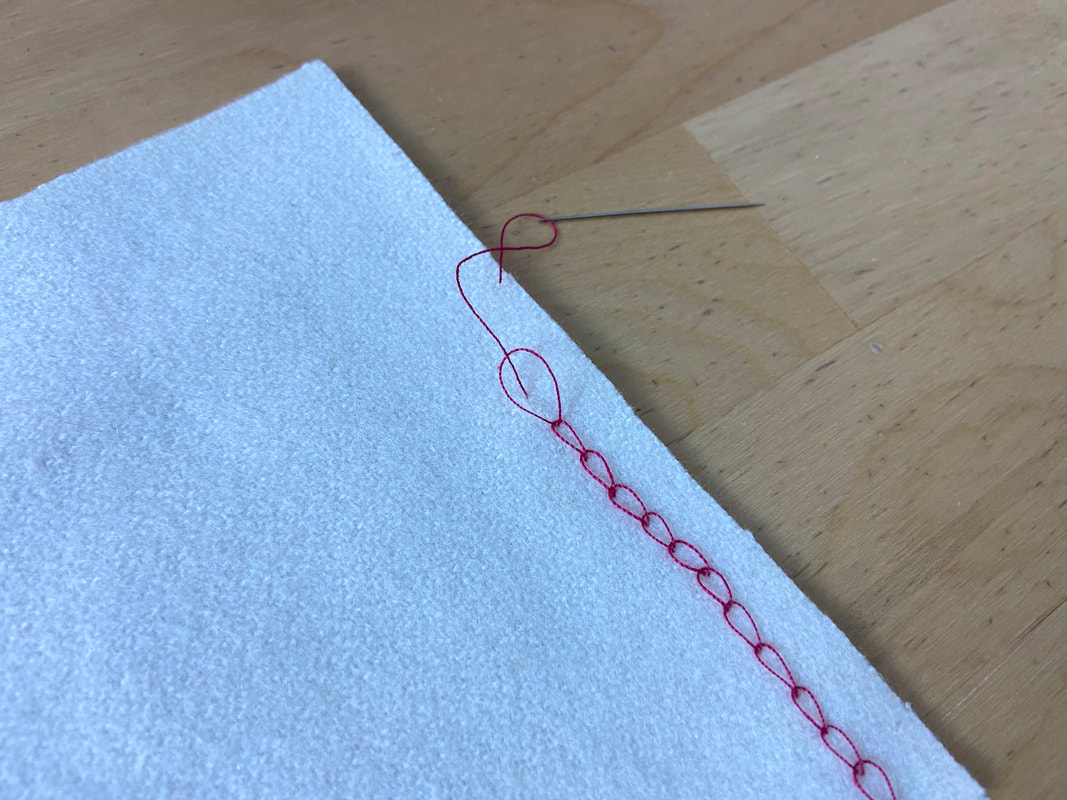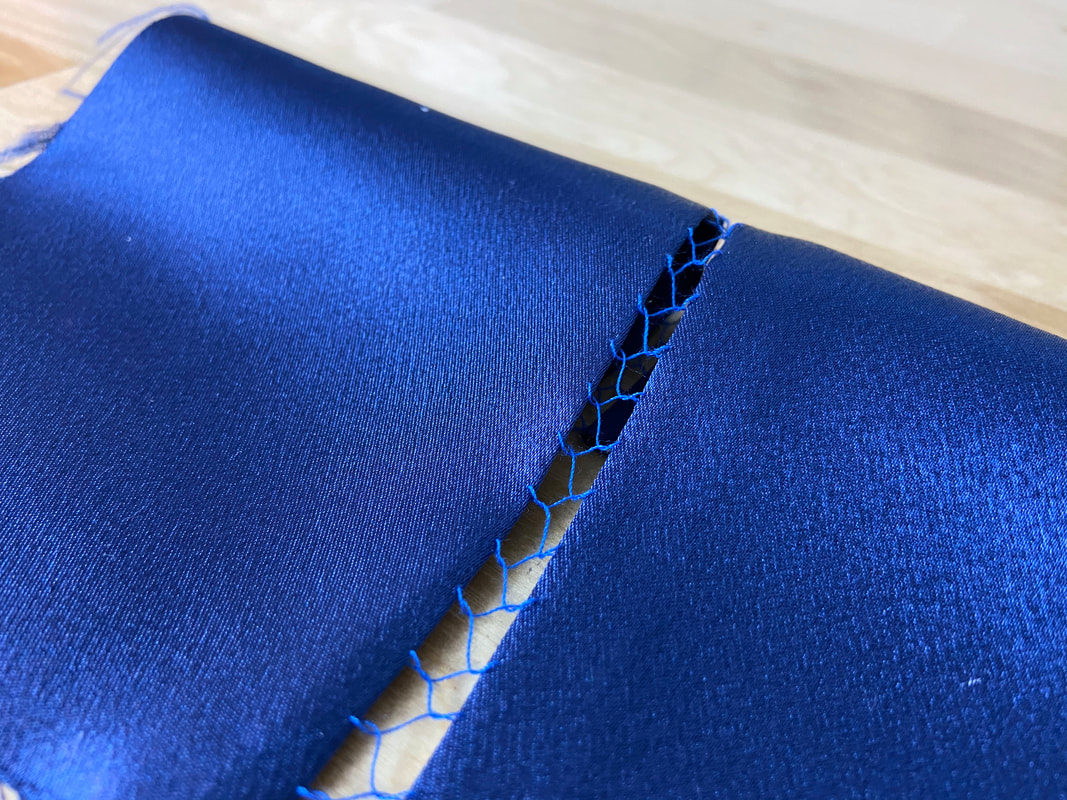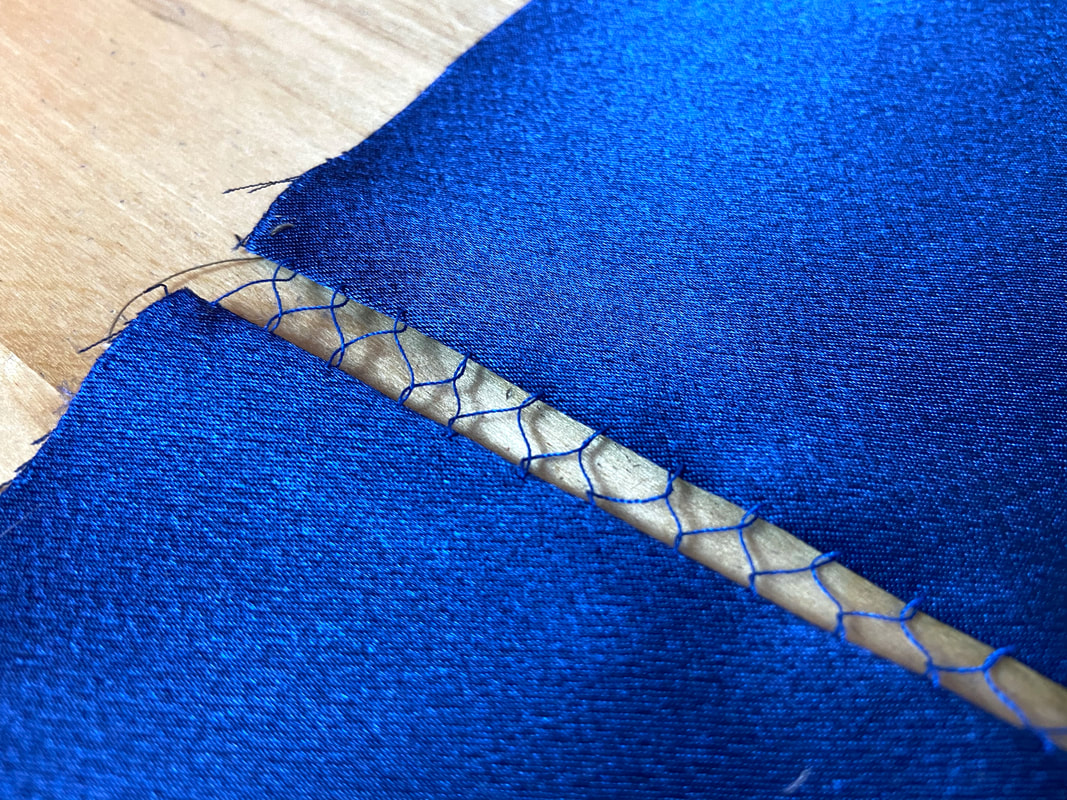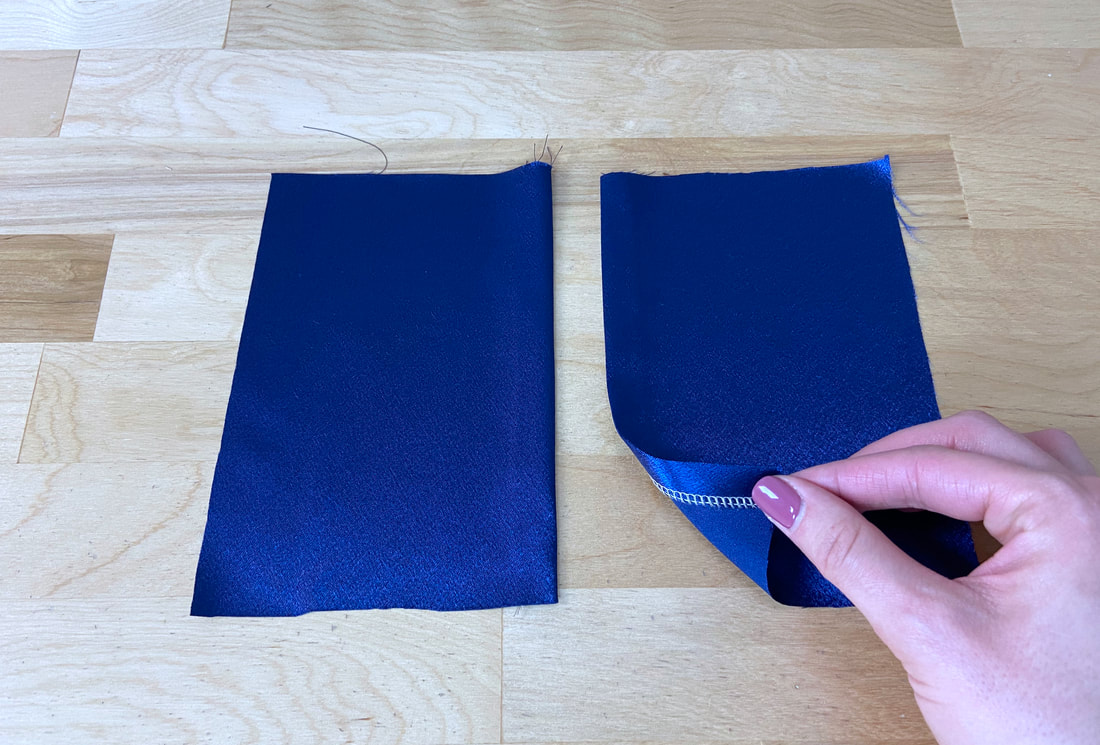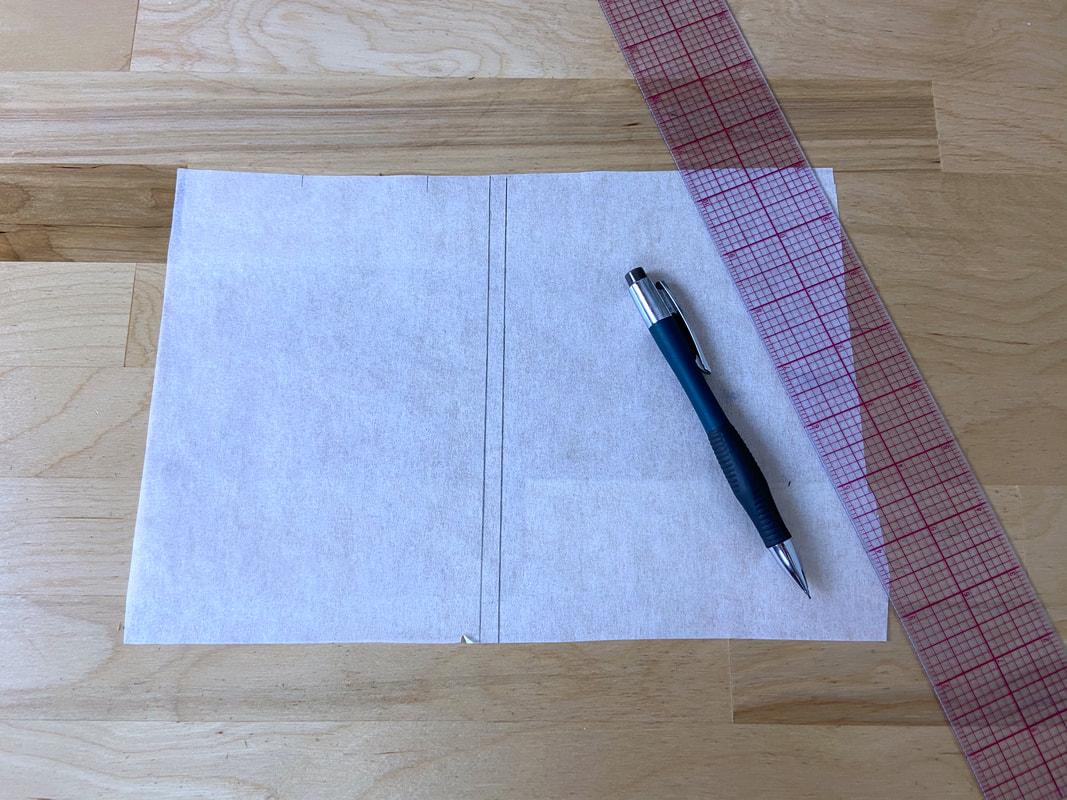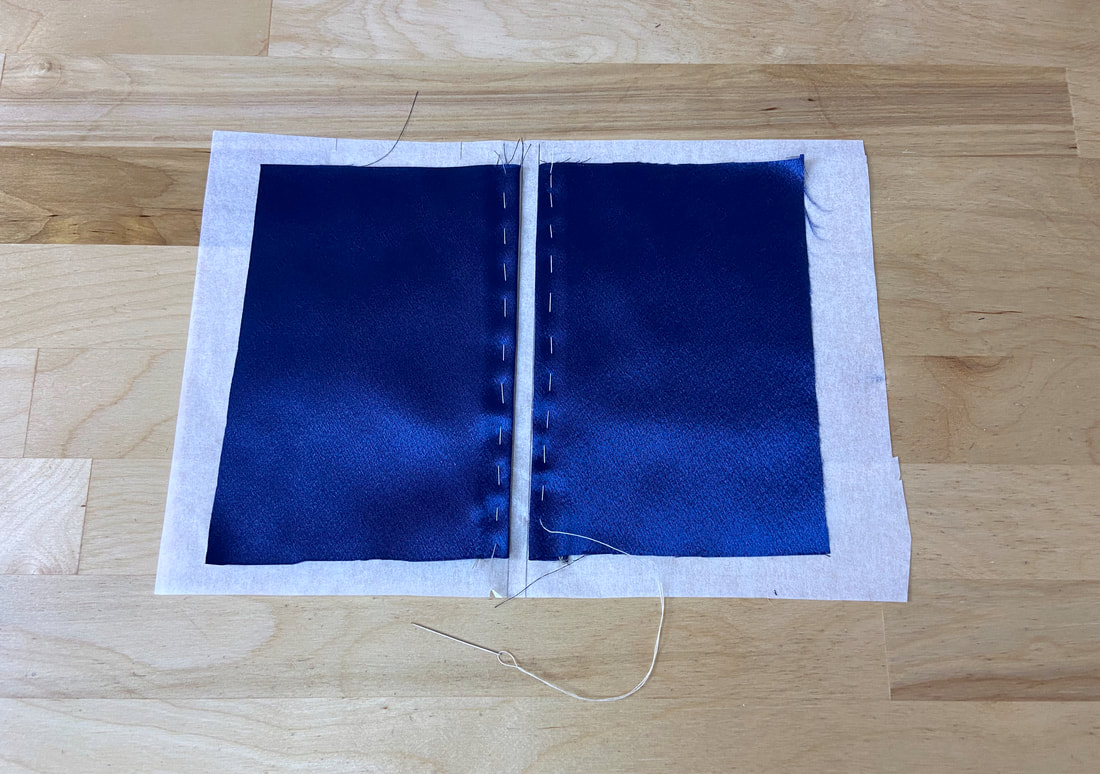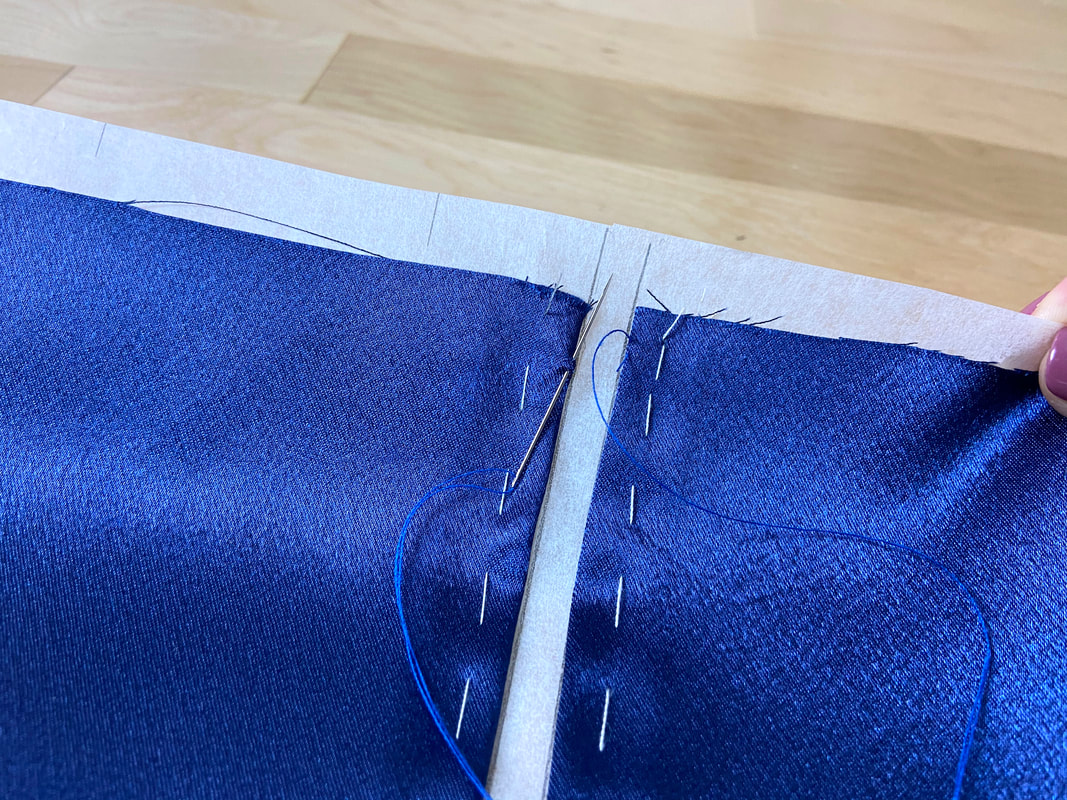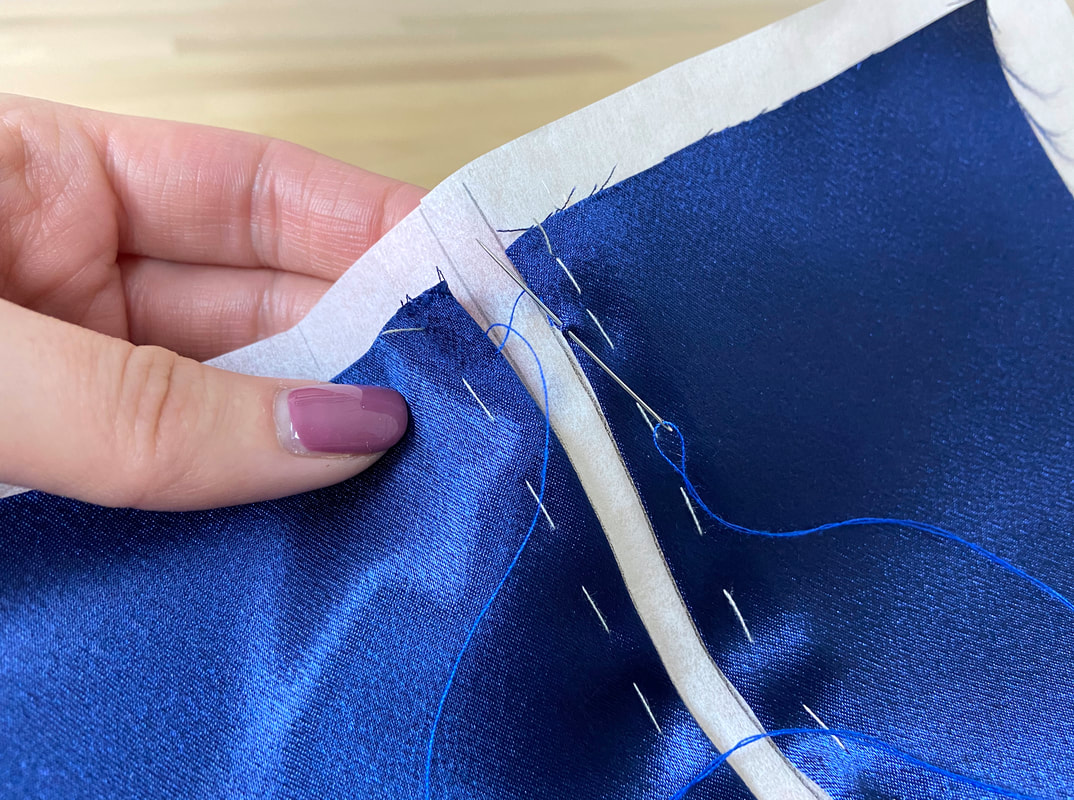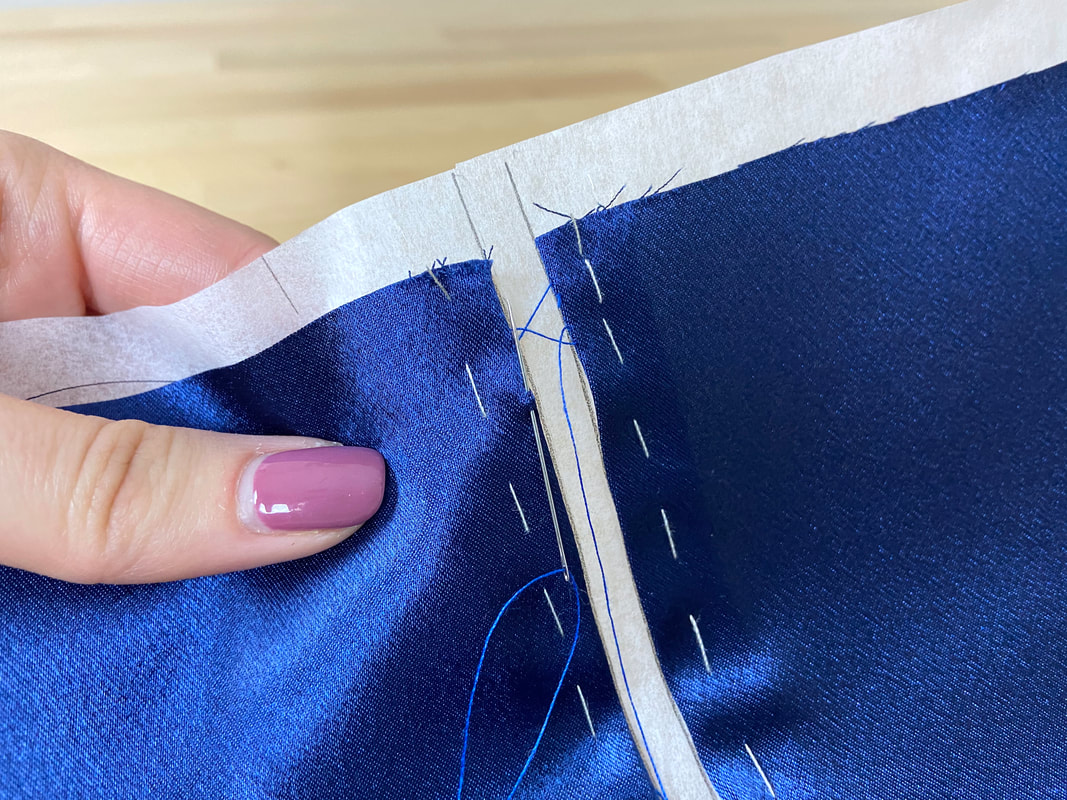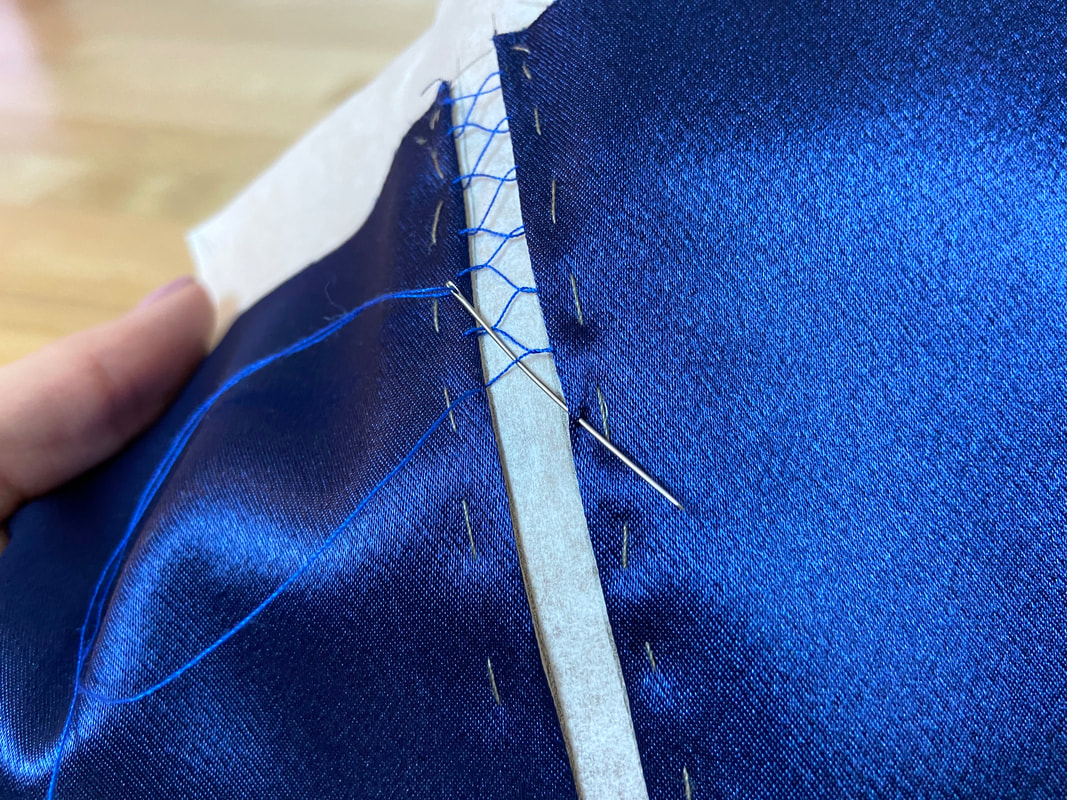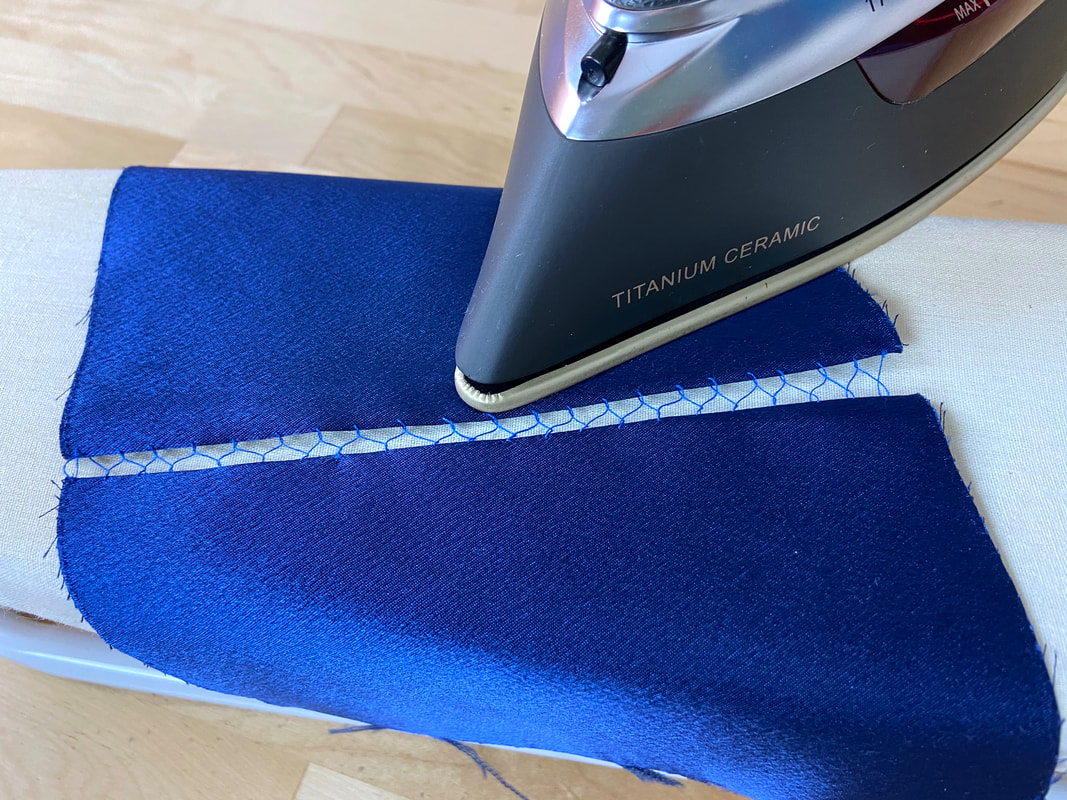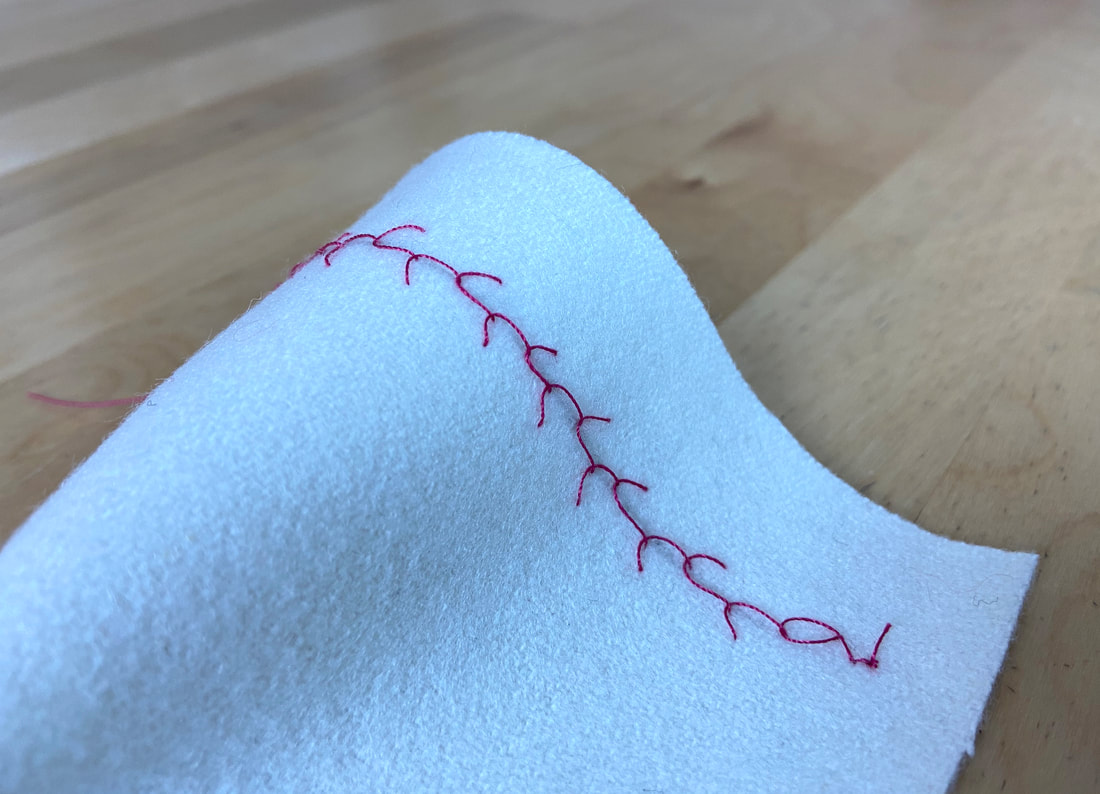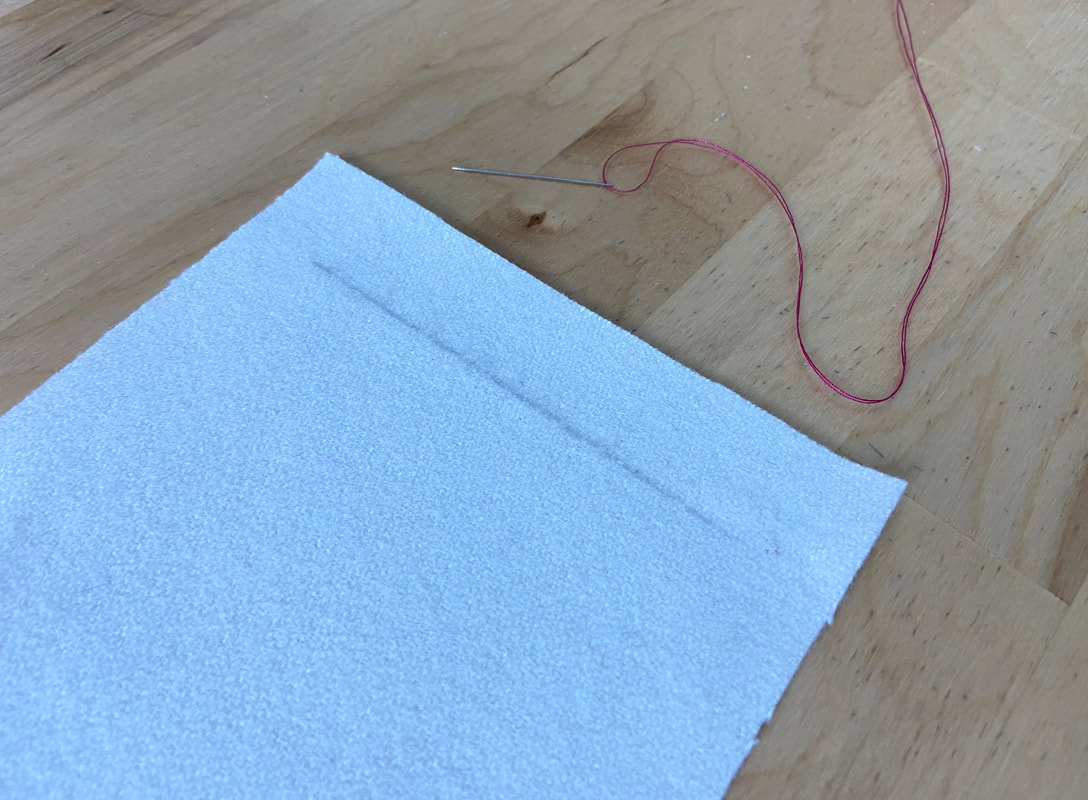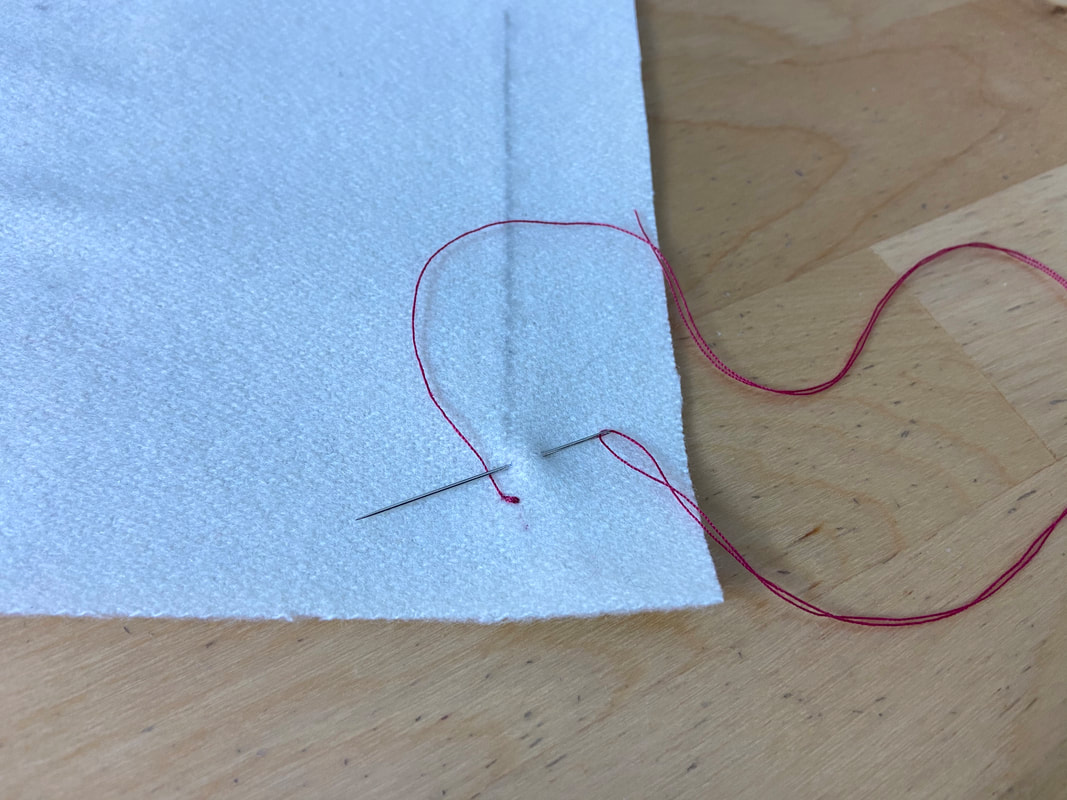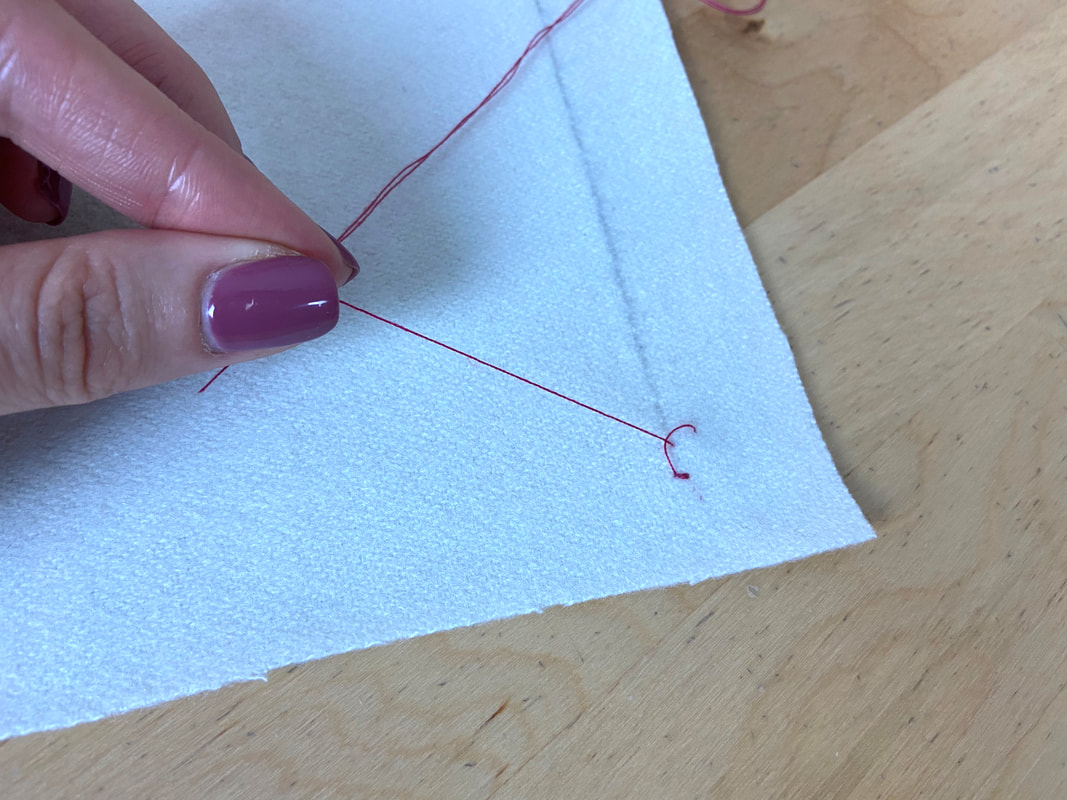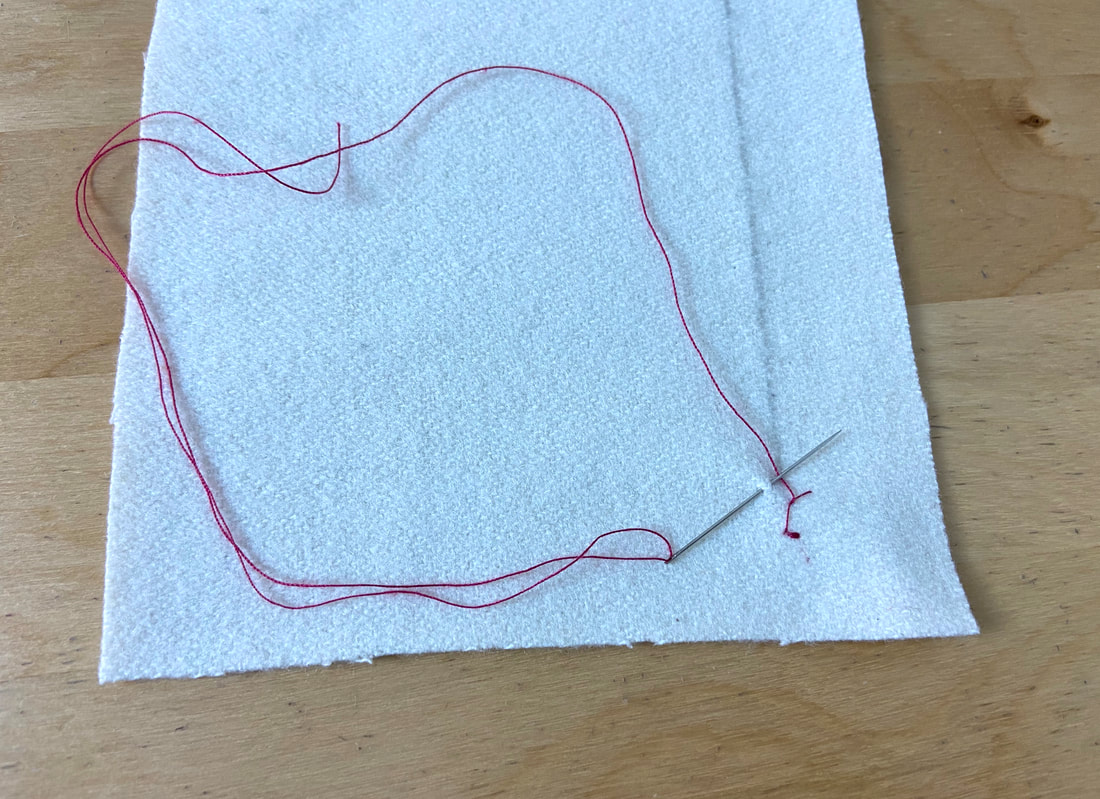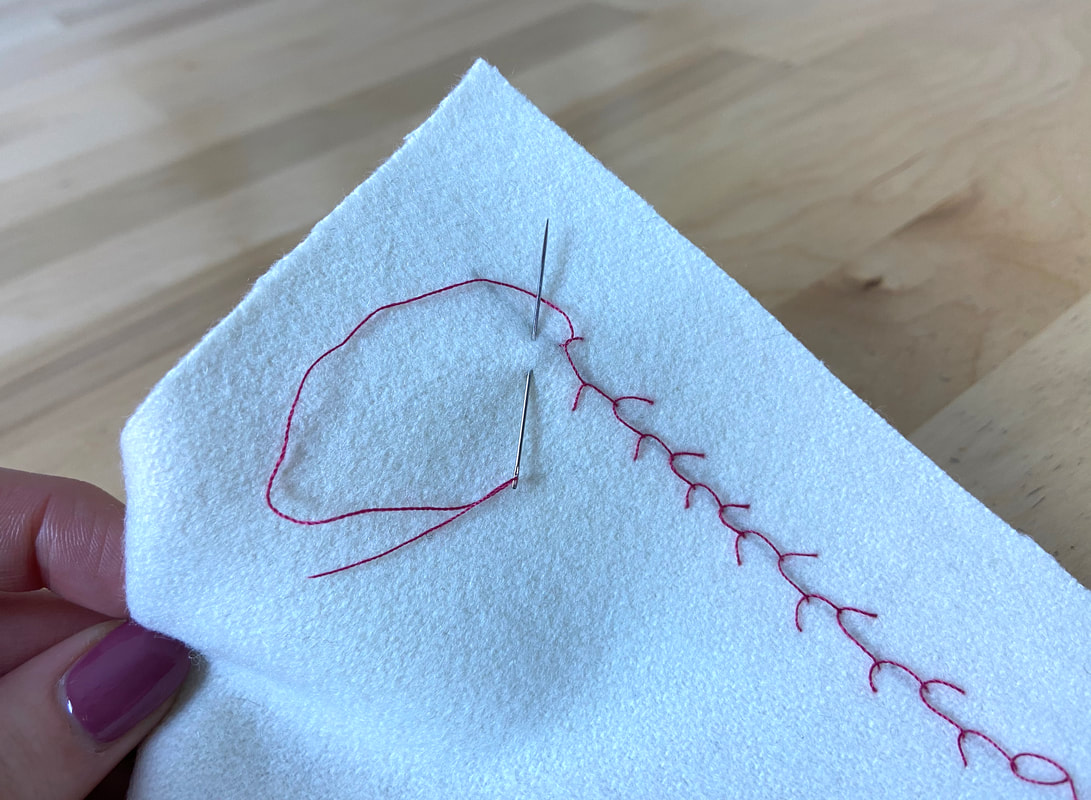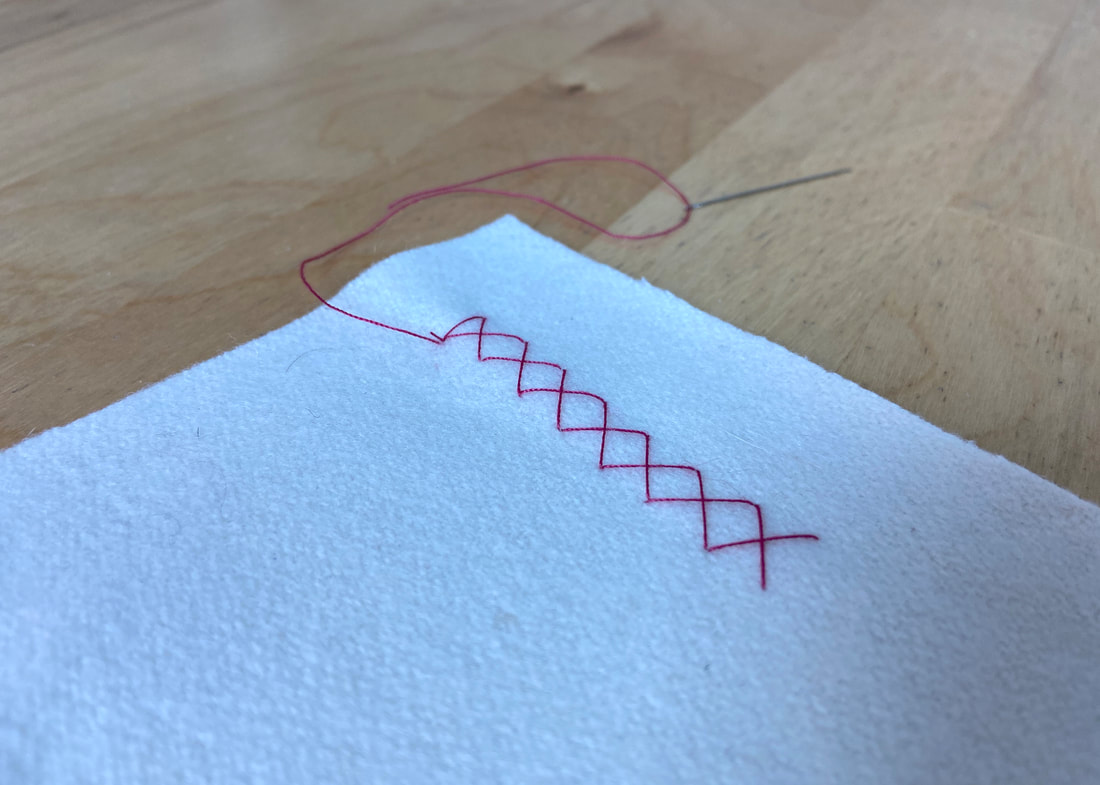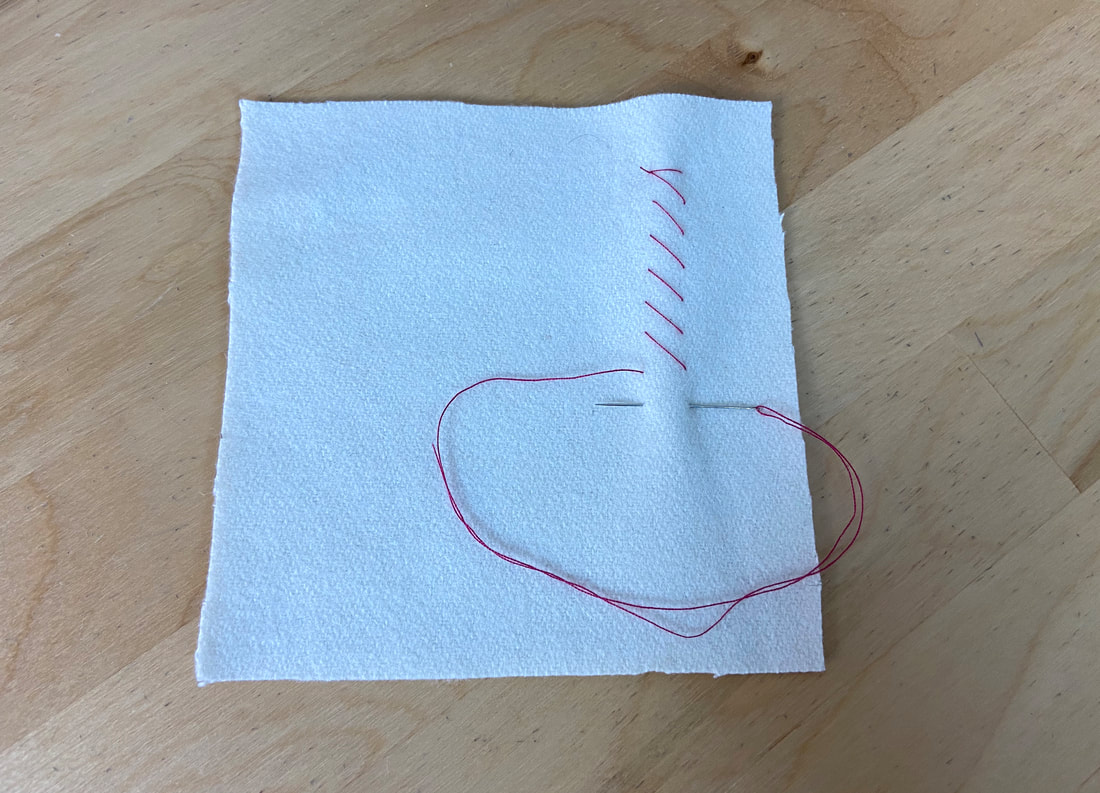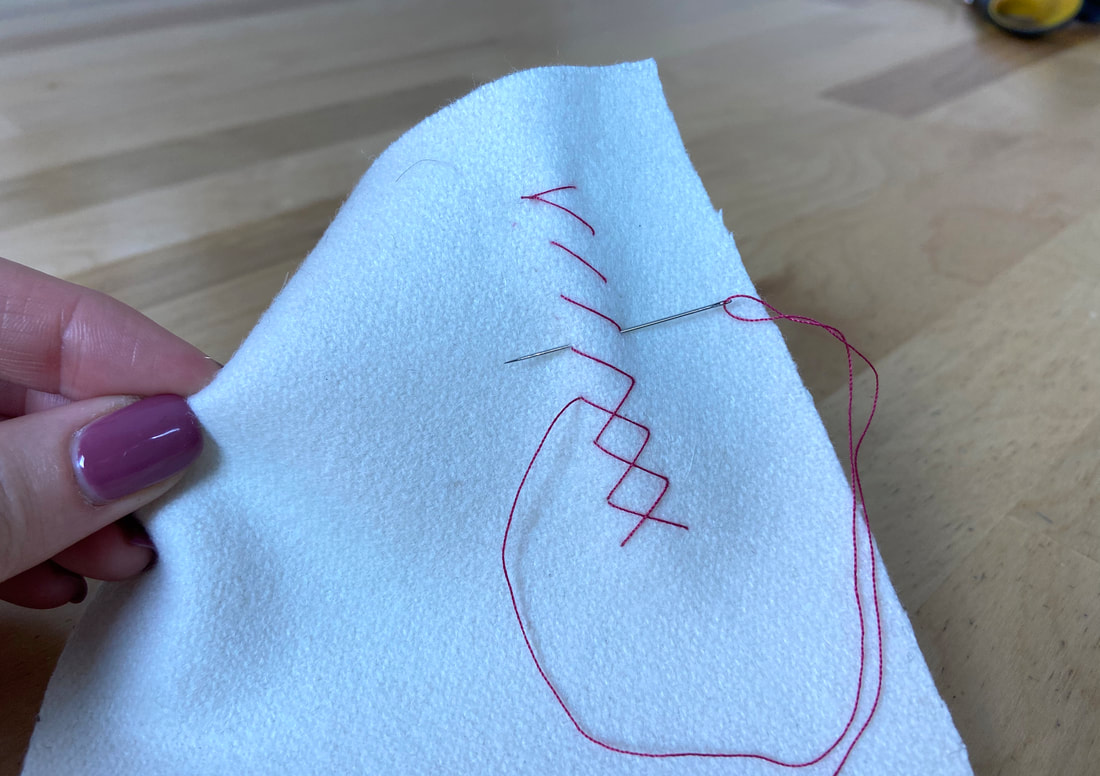What Is A Hand-Applied Chainstitch?
A chainstitch is a row of decorative stitching formed from loops that resemble a chain. A chainstitch is simple to apply and often used as a decorative border along hems or seamlines. It is usually applied in contrast color thread, and can be used as an outline for various shapes and motifs. You can use single or double the thread, or thicker thread for a magnified effect.
Note: There is an application called a thread chain which is created similar to the chainstitch but it is not directly stitched to the fabric surface. A thread chain is built by hand and serves as a belt loop, button loop or a French tack alternative.
How To Sew A Chainstitch
1. Fasten the thread by stitching in place a few times.
2. Keeping thread to left side, insert a stitch, looping the thread underneath the needle point as shown.
Pull thread through to create the first loop stitch.
3. Insert the needle back through where the thread last emerged, and apply a stitch at the same distance as the last. Loop thread around and under the needle again as shown.
4. Continue stitching as described until the chainstitch application is complete.
What Is A Fagoting Stitch?
A fagoting stitch is a unique hand stitching application that connects two fabric edges together by keeping a certain distance between them. This stitch creates a chevron-like decorative element in between the two connected edges.
When applying a fagoting stitch, there are some important technicalities to consider:
First, a fagoting stitch should be applied in areas of least strain and tension in the garment. Keep in mind that this decorative stitch provides a connection that is not as strong as an actual machine-stitched seam.
Second, you should be very careful to maintain a distance between the two edges that is not only perfectly even but also correctly proportionate to the garment. In other words, a gap left for a fagoting stitch application should not extend past the garment’s specified measurements. Conventionally, the edges are folded to account for the space needed for the fagoting stitch application.
How To Sew A Fagoting Stitch
1. In this example, the gap reserved for the stitch is ¼”, thus an additional 1/8” (half of the gap measurement) should be folded in at each seam allowance edge. Before folding, apply an overedge stitch to each seam allowance edge to enclose any unraveling threads.
2. Draw the ¼” gap on a piece of paper using two parallel lines as shown.
3. Align each edge to the corresponding parallel line and hand baste each folded edge to the paper underneath.
4. Insert the needle upwards through one of the folds, then stitch the other opposite fold at a lower distance, again, bringing the needle upward to apply a small stitch.
5. Move down to the opposite fold, taking another small stitch upwards a shown.
Move down the opposite fold again and take another stitch in upward direction.
6. Continue stitching as described until the entire gap is filled. You should see little crossing threads at each fold.
7. When complete, remove the basting and paper underneath, and iron the seam flat.
What Is A Featherstitch?
A featherstitch is a decorative stitch that features branch-like stitches. As you might have guessed based on the name, the finished stitch looks similar to the structure of a feather or a tree branch.
In the application process, a featherstitch follows a straight line which is usually directly marked on the fabric and used as a stitching reference. Featherstitching is another great way to add a border, especially around curved edges.
How To Sew A Featherstitch
1. Draw a line with a quilting pencil or tailor’s chalk to mark the middle of the desired featherstitching. This marked line will serve as a guide in the stitching process.
2. Stitch a few times in place to secure the thread (backstitching). Take the first stitch across the line, inserting the needle diagonally, slanting towards the marked line as shown.
Keeping the thread under the needle, pull thread through. Do not pull too tightly but rather let it loop a little to create a curved, organic effect.
3. Repeat a similar slant stitch on the opposite end of the marked line as shown.
4. Continue until the featherstitch is complete. It may take a little time to get used to navigating evenly along the marked line. Practice makes perfect!
What Is A Cross Stitch?
A cross stitch forms crossing x’s that connect to one another at each end. Cross stitching is similar to the application of single cross tacks. In this case however, the stitch is formed of multiple cross tacks stacked to form a continuous line.
The size and length of a cross stitch depends on the shape of the individual cross stitches. Cross stitching is applied from top to bottom, creating diagonal floats in the application process. If the floats are closer together, the final cross stitch will be denser resulting in a smaller size stitch.
How To Sew A Cross Stitch
1. Starting at the top, apply consecutive horizontal stitches from right to left to form diagonal floats. The farther the horizontal stitches are from one another, the farther apart the diagonal stitches will be placed (floats will be larger).
2. Once the floats are applied all the way down, start stitching from bottom to top, inserting horizontal stitches from right to left, and connecting the ends of the diagonal stitches applied in Step 1 above.
You can experiment with cross stitching of different sizes and densities by adjusting the distance between the floats and the length of the horizontal stitching itself.

